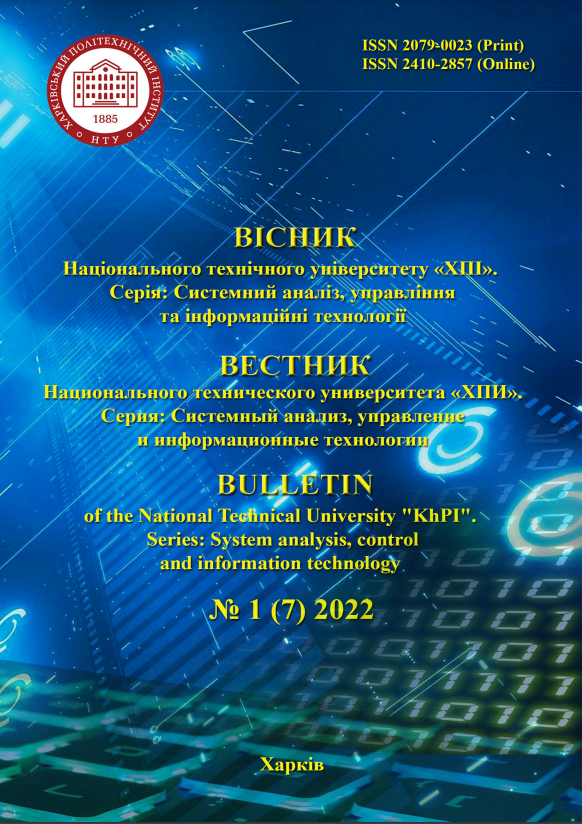BLACK AND WHITE-BOX UNIT TESTING FOR WEB APPLICATIONS
DOI:
https://doi.org/10.20998/2079-0023.2022.01.13Keywords:
manual testing, automated testing, black-box testing, white-box testing, enzyme library, react testing libraryAbstract
The types of the testing methods were analyzed from the side of development. If changes are made to the code, even minor ones, bugs can appear anywhere in the system. The cost of fixing bugs increases with the time they are discovered. Using effective web testing can prevent unexpected costs. Modern web applications are indeed a place where all the type of the testing is vital for the high-quality product. At the moment, traditional front and back office applications are increasingly moving from desktop computers to web interfaces, so testing web applications is becoming extremely relevant. Thus, learning what to automate and how is an important component of successful web application testing. Web application testing is a software practice that is designed to ensure quality by verifying that the functionality of a particular web application works correctly or according to fixed requirements. Web testing makes it possible to find bugs at any point in time, before release or on a daily basis. On the one hand there are wide range of tools that could be used to pursue this goal by means of using best decisions present for now but on the other hand there are essential advantages and disadvantages present in these tools, which are all in the approach to it, so there are always cons and pros of using one or another. For now, despite on having the ability to test using both black and white box testing it looks like the second one is not the best choice. There are several points on each board for both of them, but black box approach that is being represented with react testing library is more successful and efficient way to cover and application with high- and low-level tests, that could be easily maintained and understood. But white box testing is now the most used decision due to the historic development of the industry. So, it also has some great features and could be chosen to be used on the project, but it should be precise choice with the understanding of all the consequences standing behind.
References
Bentley J., Bank W., Charlotte N. C. Software Testing Fundamentals – Concepts, Roles, and Terminology. Planning, Development and Support. Available at: https://support.sas.com/resources/papers/proceedings/proceedings/su gi30/141-30.pdf (accessed: 10.05.2022).
Jenkins N. A. Software Testing Primer v.2. OPENLIBRA, 2017. 55 p.
Myers G. J. The art of software testing. New York: Wiley, 2011. 256 p.
Gotel O., Cleland-Huang J., Hayes J., Zisman A., Egyed A. Software and Systems Traceability. London: Springer, 2012. 152 p.
Rubin K. S. Essential Scrum: A Practical Guide to the Most Popular Agile Process. Addison-Wesley Professional, 2012. 452 p.
Mike Cohn. Succeeding with Agile: Software Development Using Scrum 1st Edition. Addison-Wesley Professional, 2009. 512 p.
Important Software Test Metrics and Measurements. Available at: http://www.softwaretestinghelp.com/software-test-metrics-andmeasurements (accessed: 10.05.2022).
Crump, S. C. Simplify Testing with React Testing Library: Create maintainable tests using RTL that do not break with changes. London: Packt Publishing, 2021. 246 p.
Daniel Irvine. Mastering React Test-Driven Development: Build rock-solid, well-tested web apps with React, Redux and GraphQL. London: Packt Publishing, 2019. 496 p.
David Flanagan. JavaScript: The Definitive Guide: Master the World's Most-Used Programming Language 7th Edition. London: O'Reilly Media, 2020. 706 p.
Carlos Santana Roldán. React Design Patterns and Best Practices: Design, build and deploy production-ready web applications using standard industry practices 2nd Edition. London: Packt Publishing, 2019. 350 p.
Trevor Burnham. Test-Driven React: Find Problems Early, Fix Them Quickly, Code with Confidence 1st Edition. London: Pragmatic Bookshelf, 2019. 192 p.
Downloads
Published
How to Cite
Issue
Section
License
LicenseAuthors who publish with this journal agree to the following terms:
- Authors retain copyright and grant the journal right of first publication with the work simultaneously licensed under a Creative Commons Attribution License that allows others to share the work with an acknowledgement of the work's authorship and initial publication in this journal.
- Authors are able to enter into separate, additional contractual arrangements for the non-exclusive distribution of the journal's published version of the work (e.g., post it to an institutional repository or publish it in a book), with an acknowledgement of its initial publication in this journal.
- Authors are permitted and encouraged to post their work online (e.g., in institutional repositories or on their website) prior to and during the submission process, as it can lead to productive exchanges, as well as earlier and greater citation of published work (See The Effect of Open Access).


